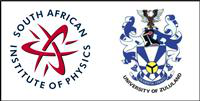Speaker
Apply to be<br> considered for a student <br> award (Yes / No)?
Yes
Level for award<br> (Hons, MSc, <br> PhD)?
Hons
Would you like to <br> submit a short paper <br> for the Conference <br> Proceedings (Yes / No)?
Yes
Abstract content <br> (Max 300 words)
Knowledge of the ionospheric electron density distribution and its fluctuations are essential for models such as the International Reference Ionosphere (IRI) for predicting ionospheric characteristics for radio wave propagation and for other applications such as satellite tracking and navigation, etc. the Global Navigation Satellite Systems (GNSS), such as the Global Positioning System (GPS), can be used to determine the Total Electron Content (TEC) in the ionosphere. TEC is an important characteristic of the Earth’s ionosphere that carries information on time and position variability of the ionosphere and has proved to be useful as a sensor of ionospheric climatology. However, such satellite to ground-based receiver measurements can only produce information about the density in the form of path-integrated snap-shots of the TEC. The challenge is to decompose its integral properly into the different values of Ne in order to generate the distribution of the Ne with altitude. In this study, we use the tomographic reconstruction techniques to successfully reconstruct the altitude structure of the ionosphere from TEC data. Using the data from the recently installed Africa Array GPS stations in the Central-Southern Africa region, we calculate three-hour average Ne profiles over this wide region using ionospheric tomography. The advantage of tomographic ionospheric Ne profiles is that they provide information of the Ne distribution up to global positioning system (GPS) orbiting altitude (with the coordination of space-based GPS tomographic profiles), and can be incorporated into the next generation of the IRI model. Since it uses real measurement data, tomographic average Ne profiles describe the ionosphere during quiet and disturbed periods. The computed average Ne profiles are compared with IRI model profiles. The study provides a good indication of the ionospheric electron density distribution and its fluctuations and how it compares with the IRI model in this region. This knowledge is essential in the adaptation of the IRI model for the locations and epochs of interest to enable data ingestion and assimilation necessary for transforming it into a real-time or near-real time ionospheric ionization Ne characterization model.
Main supervisor (name and email)<br>and his / her institution
Patrick Sibanda, sibandapatrick.ps@gmail.com, University Of Zambia

